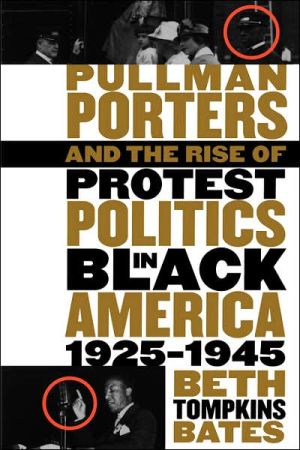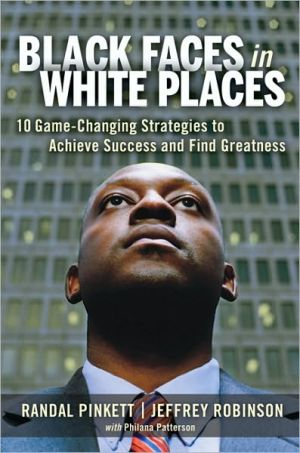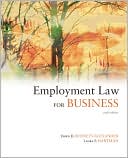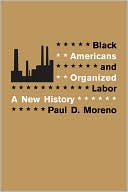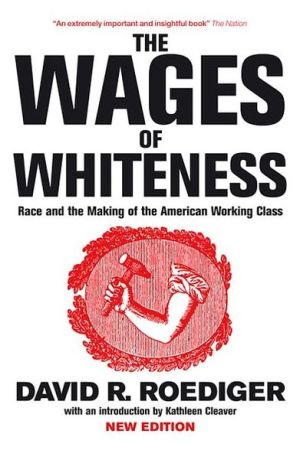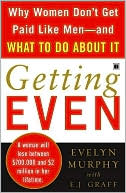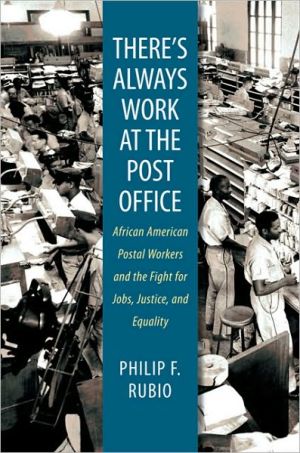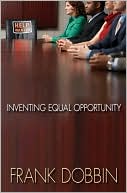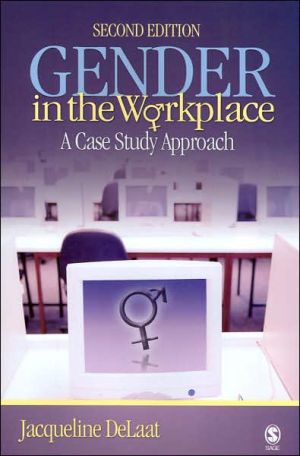Pullman Porters and the Rise of Protest Politics in Black America, 1925-1945
Between World War I and World War II, African Americans' quest for civil rights took on a more aggressive character as a new group of black activists challenged the politics of civility traditionally embraced by old-guard leaders in favor of a more forceful protest strategy. Beth Tompkins Bates traces the rise of this new protest politics—which was grounded in making demands and backing them up with collective action—by focusing on the struggle of the Brotherhood of Sleeping Car Porters...
Search in google:
Between World War I and World War II, African Americans' quest for civil rights took on a more aggressive character as a new group of black activists challenged the politics of civility traditionally embraced by old-guard leaders in favor of a more forceful protest strategy. Beth Tompkins Bates traces the rise of this new protest politics--which was grounded in making demands and backing them up with collective action--by focusing on the struggle of the Brotherhood of Sleeping Car Porters (BSCP) to form a union in Chicago, headquarters of the Pullman Company. Bates shows how the BSCP overcame initial opposition from most of Chicago's black leaders by linking its union message with the broader social movement for racial equality. As members of BSCP protest networks mobilized the black community around the quest for manhood rights and economic freedom, they broke down resistance to organized labor even as they expanded the boundaries of citizenship to include equal economic opportunity. By the mid-1930s, BSCP protest networks gained platforms at the national level, fusing Brotherhood activities first with those of the National Negro Congress and later with the March on Washington Movement. Lessons learned during this era guided the next generation of activists, who carried the black freedom struggle forward after World War II. Tera W. Hunter This is an excellent piece of scholarship.
Pullman Porters and the Rise of Protest Politics in Black America, 1925-1945\ \ \ By Beth Tompkins Bates\ \ University of North Carolina Press\ Copyright © 2001 The University of North Carolina Press.\ All rights reserved.\ ISBN: 0807826146\ \ \ \ \ Introduction\ \ \ We are creatures of history, for every historical epoch has its roots in a preceding epoch. The black militants of today are standing upon the shoulders of the New Negro radicals of my day, the twenties, thirties, and forties. We stood upon the shoulders of the civil rights fighters of the Reconstruction era, and they stood upon the shoulders of the black abolitionists. These are the interconnections of history, and they play their role in the course of development. — A. Philip Randolph\ \ \ \ When Asa Philip Randolph migrated to Harlem on the eve of World War I, he was in search of a place where he could be whole and human. Turn-of-the-century Jacksonville, Florida, where A. Philip Randolph had been raised, offered few opportunities for a well-educated, self-assured, ambitious young African American. During his youth in that Florida community, Randolph had learned valuable lessons about his rights and responsibilities as a citizen, but he realized he must leave the South in order to begin to realize full membership in American society.\ In 1927 Richard Wright, like Randolph before him, left the South for the promise of freedom that lay in the mythic land to the north of the Ohio River. As he recounted in Black Boy, "my deepest instinct had always made me reject the 'place' to which the white South had assigned me. It had never occurred to me that I was in any way an inferior being." Moreover, the white South said it not only knew Wright's "place" but also who he was. Wright noted, with some irony, that not only did the white South not know who he was, neither did he. In order to find himself, he had to leave.[1]\ Wright's autobiography painstakingly depicts the multiple ways that Jim Crow tried to silence his humanity.[2] He felt he must go north to free himself from the suffocation of the southern caste system. Randolph went further and thought all African Americans needed to create as much distance as possible between themselves and the social relations of slavery—those customs, beliefs, and practices, recorded by Wright, that, when acted upon and repeated daily in white America, create and recreate racism even as they spawn a "rationalization" for relegating a group of people to an inferior status.[3] Neither Wright nor Randolph found the equality he sought up north: relations between black and white Americans, albeit different from those in the South, were polluted by the refuse from slavery that had floated to northern shores. While Wright used his artistic talents to "hurl words into this darkness," narrating the "hunger for life . . . to keep alive . . . the inexpressibly human" yearnings of black Americans, Randolph dedicated a good part of his life to helping African Americans challenge the legacy of slavery.[4] Both men were engaged in what Vincent Harding called the struggle to develop one's "whole being."[5]\ When Randolph arrived in Harlem in 1911, the lack of self-reliance and independence from white control among African Americans frustrated him. He criticized black leaders who were part of what he called the Old Crowd, "subsidized by the Old Crowd of white Americans—a group which viciously opposes every demand made by organized labor for an opportunity to live a better life." As an editor of the Messenger beginning in 1917, Randolph placed the need for new tactics and new leaders high on his agenda for claiming an equal place in society. Black politicians "owe their places, not to the votes of the people, but to the white bosses who appointed them," warned Randolph. "Power over a man's subsistence is the power over his will."[6] Randolph thought the tactics of the Old Crowd of black leaders perpetuated servile relations between black and white Americans. Although slavery as an institution, legalized by the state, had ended in 1865, he believed that certain perspectives and practices engendered under slavery continued to hold the rights of African Americans in thrall well into the twentieth century; black Americans would not be free until they directly challenged servile social relations.\ This concern with the legacy of slavery defined the position of "New Negroes," who, like Randolph, believed that actual emancipation could no longer be denied.[7] Legal equality achieved in 1865 did not erase the image of black people as moral inferiors which had been stamped on the consciousness of white America through years of slavery. For example, at the end of the nineteenth century, economic competition with black workers was translated by white trade unionists into a "high-stakes moral contest" involving race: white workers felt accepting black workers on an equal basis would be degrading, which provided a rationale for maintaining racial barriers in unions.[8] Reluctance to recognize the moral equality of black Americans complicated the task of claiming equal economic opportunity for black workers decades after the end of slavery. Randolph felt that moral inequality and economic discrimination in the workplace were inextricably linked to what Eric Foner reminds us is the "unresolved legacy of emancipation," the struggle for equality in social relations, which is still "part of our world, more than a century after the demise of slavery."[9]\ This book is about a group of African American Pullman car porters, under the leadership of Randolph, who pressed the claim that they had the right, as Americans, to live and work on an equal basis with white Americans. The memory of slavery that was carried forward in the home, the church, and community organizations provided the subtext of the battle by the Brotherhood of Sleeping Car Porters (BSCP) to claim economic rights of citizenship.\ Pullman Company porters were ever mindful of servile relations engendered in the antebellum South, for the work culture for porters, nurtured by the Pullman Company, was inherited from slavery. George Pullman, founder and president of the Pullman Company, consciously perpetuated the link between African Americans and slaves when he chose black men to be porters on his Pullman sleeping cars in the early 1870s. From the beginning, the porter's job was a black man's job, and by the end of the century the term "porter" raised an image of a black person while the term "conductor" raised the image of a white person. The BSCP organized to rewrite the master-servant narrative which had been fostered for so long by the Pullman Company. The Brotherhood's organizational campaign drew upon the memories of slavery and emancipation to connect the union's challenge to the Pullman Company to the larger quest for first-class citizenship in the broader political arena.[10]\ That quest was given new life during the First World War as thousands of black Americans journeyed north for jobs in industry. Their passage etched new coordinates on the racial map of America, changing the geography of the color line, as African Americans discovered the urban North also had constructed narrowly defined "places" for black Americans to work and live. Many African Americans seized economic opportunities opened up during the war, bidding farwell to the torturous, confining life in the rural South, to change their status and place within the larger political entity. Despite discriminatory policies of labor unions and employers, which kept black workers in so-called "Negro jobs," often those that were hot, dirty, and dangerous, they made significant inroads in manufacturing industries, such as meat-packing in Chicago. In the process, however, tensions with organized labor increased. In Chicago, during organizing campaigns in the stockyards just after World War I, the majority of the 12,000 black packinghouse workers, drawing from their experiences with racist unions in the past, kept their distance from the "white man's union." At the same time, over 90 percent of the white workers favored the union effort. Tension between black workers and white unionists were rooted in the exclusion practiced by the predominately white labor movement. Twenty-four national labor unions, ten of them affiliates of the American Federation of Labor, barred blacks completely.[11]\ Barriers also restricted where blacks in the Promised Land could live, walk, and play. Racially restrictive covenants limited the space "allocated" for black residents even as the urban black population mushroomed. When one black youth in Chicago innocently crossed over an invisible "color" line, marking the area restricted by custom to black bathers, on a hot July day, a race riot erupted. It was only one among many racial disorders during the summer of 1919, but it raised again the perennial question, asked by W. E. B. Du Bois, "Where do we come in?"[12]\ In addition, the crusade to make the world safe for democracy unleashed the hope that World War I would mark a significant turning point in the black freedom struggle. Black soldiers who returned from fighting met massive resistance from white Americans, determined that black Americans would not assume an equal place with white citizens. In addition to the race riots, more than seventy lynchings—ten of black soldiers in uniform—and the resurrection of the Ku Klux Klan demonstrated during the first year of "peace" that America was not safe for black citizens. Historian Carter Woodson had predicted as much when he observed that with northward migration "maltreatment" of African Americans would be "nationalized" when both sections "strike at this race long stigmatized by servitude but now demanding economic opportunity." African Americans demonstrated their willingness to fight back in their own defense during the postwar racial strife, reflecting the impatience they felt toward a second-class place.[13]\ In the aftermath of the war, the quest for full citizenship rights was carried forward through a variety of movements. One was the black nationalist Garvey Movement, based on race pride. In another, African Americans, defining themselves as "New Negroes," formed a social movement to put an end to their subordinate place in American democracy. The New Negro Movement, whose leaders included Randolph, Chandler Owen, Cyril Briggs, Hubert Harrison, and many others, showed that they, like Marcus Garvey, had little fear of white men and women and proclaimed that "the time for cringing is over."[14]\ In the wake of the devastation wrought by the summer of 1919 and the economic recession that followed in 1921, leadership of the traditional black betterment organizations, such as the National Association for the Advancement of Colored People (NAACP) and the National Urban League (NUL), spoke in moderate voices. While James Weldon Johnson, the first black secretary of the NAACP, often used militant rhetoric to rebuke "spineless men who are relying on 'good white friends' to give them citizenship rights," the black leadership of the NAACP followed an approach that favored moderation over militancy and issuing appeals to white benefactors rather than demanding rights.[15] Not until the late 1930s did the NAACP change course and hew its policies to the interests of the black working class and the politics of a new crowd committed to direct, mass action. By the early 1940s many within the old guard were supporting the protest politics of a new crowd of black activists.\ The question is how did the protest politics espoused by the New Negro Movement—what I call new-crowd protest politics—take root in the black community between the wars? To approach such a large question, this study uses the struggle by the Brotherhood of Sleeping Car Porters to form a union of black workers in Chicago as a vehicle for analyzing the process. In August 1925 a group of disgruntled Pullman porters in New York City asked Randolph to head an effort to form an independent union of porters and maids. Although the effort was successful in New York, the BSCP needed to win support in Chicago, headquarters of the giant Pullman corporation and the city where the largest number of porters and maids lived. The organizing effort stalled when the BSCP headed west to Chicago in October. A major problem was resistance from the majority of the middle-class leaders who, believing porters should not rattle the notoriously antiunion Pullman Company, spoke against the BSCP. At that time black leaders placed little faith in the power of labor unions to advance the interests of black Americans. The BSCP needed the support of the middle-class black community and its institutions because they controlled the press, the pulpit, and public opinion.\ This inquiry traces how the BSCP won allegiance in black neighborhoods and used a union movement to counter resistance by addressing the community's growing concern over citizenship. The story begins by examining political change from the point of view of participants in networks formed under the tutelage of the BSCP, then charts the path that linked the politics of local networks to the national agenda of the NAACP. Thus, the larger concern is how tactics of local protest networks contributed to reconfiguring the range and direction of national protest politics. The argument is that initiatives for changing the approach to gain a more equal place in American society flowed from grass-roots networks to the boardrooms of national black organizations and then back again, somewhat like a double-arrowed chemical reaction in a nonlinear, interactive process.\ "Hindsight," as David Potter noted in reference to writing about the decade preceding the Civil War, is the historian's "chief asset and his main liability."[16] Potter's comment reminds us of the risk involved in studying groups that have been hailed as "social visionaries," as though the outcome of the organization of the Brotherhood of Sleeping Car Porters were preordained.[17] In fact, it was the problem of hindsight that led me to the question that important studies on the Brotherhood of Sleeping Car Porters raised but never answered. While the struggle of the BSCP against the Pullman Company has been documented with scholarly care, previous histories did not examine fully the relationship between the BSCP and the larger black community.[18] We know that the black press, ministers, and politicians resisted the Brotherhood's efforts to organize in 1925 but not how long the Brotherhood faced resistance from the larger community, as well as how it was able to proceed without the support of the middle class and the institutions it controlled. Yet, by the time the Brotherhood won its contract from the Pullman Company in 1937, the porters could do little wrong in the eyes of the community and its leaders. The shift was historic: the efforts of the BSCP contributed significantly to changing the antiunion perspective embraced by a large portion of the black middle class. This study was undertaken with the hope that, by examining the organizational process of the BSCP as it intersected with the black community, I might understand why that community came to support the BSCP, and, further, why the Brotherhood's initial efforts created such turmoil in middle-class circles.\ When the Brotherhood first tried to mobilize support within the community, some members of the black elite claimed that the BSCP threatened to "bite the hand that feeds you" with its challenge to the Pullman Company, considered a friend of black labor in many circles. Yet, by the early thirties, black, old-guard leaders—once committed to using individual appeals to white patrons when negotiating racial inequities—began to view labor unions, collective solidarity, and grass-roots mobilization as important tools in the ongoing fight for first-class citizenship. The reasons for the shift from a one-on-one approach to a protest strategy grounded in making demands backed by collective action is a key theme of this book.\ A major target of the Brotherhood of Sleeping Car Porters was the Employee Representation Plan (ERP), a company union. The Brotherhood's labor rhetoric emphasized the handicap of working under a company union because there were "too many Uncle Toms in the service with their slave psychology" who "bow and kowtow" to the company officials.[19] In the battle against the paternalism of the Pullman Company, the BSCP employed the legacy of slavery to depict the Pullman Company as "callous and heartless as Nero," treating the Pullman porter "like a slave." To make its point, BSCP used the idiom of manhood rights to describe the servile relations that prevailed. "The porter has no manhood in the eyes of the company," according to BSCP. He could be addressed as "George" by some sixteen-year-old "Whipper snapper messenger boy" even though the porter might be four times the boy's age. "And if . . . he should assert his rights as a man, immediately he is branded as a rattled brain radical, and hounded and harassed out of the service."[20]\ But the idiom of manhood and manhood rights conveyed more than taking a stand against Pullman paternalism. Organizers drew upon the concept of manhood as it had developed in nineteenth-century conflicts over the meaning of suffrage and citizenship in African American history and built upon understandings of manhood carried forward through sacred as well as secular texts, such as W. E. B. Du Bois's The Souls of Black Folk. Du Bois recalled resistance in the nineteenth century when people "strove singly and together as men . . . not as slaves." Referring to Frederick Douglass, one of the heroes cited often in Brotherhood organizing literature, Du Bois noted that "Douglass, in his old age, still bravely stood for the ideals of his early manhood—ultimate assimilation through self-assertion and on no other terms."[21]\ Manhood rights appealed to a broad audience. Many black Chicago clubwomen were drawn to the Brotherhood, for example, because they, too, employed the concept manhood rights, which they defined in universal, humanistic terms. Ida B. Wells-Barnett, internationally renowned antilynching activist, was among them. Wells-Barnett initiated her antilynching crusade after a thorough investigation led her to conclude that the increase in lynching in the late nineteenth century was a deliberate response to black economic gains and political potential. When black men were accused of rape against white women, the charge was often a subterfuge, suggesting that lynching was punishment for the crime of black progress, viewed as a move toward social equality.[22] It was within the context of Wells-Barnett's antilynching campaign that she, and several other women, organized the first civic club among black women in Chicago, the Ida B. Wells Club, fusing race and gender issues.[23] While many clubwomen inextricably linked the interests of black womenhood and race progress—and believed, as Deborah Gray White argues, that solutions to the race problem "began and ended with black women"—there was a price to pay in terms of black feminism.[24] Black clubwomen were instrumental in advancing citizenship interests of African Americans through their alliance with the Brotherhood, but there were indications that female assertiveness sometimes created tensions between male organizers and the clubwomen network.[25] Nevertheless, the concept of manhood rights connected the Brotherhood and clubwomen who defined their gender interests mainly in racial terms as they worked with black men to improve the place of black Americans.[26] During the 1920s and 1930s, the larger problem—claiming rights of first-class citizenship—usually overshadowed other issues.\ The Brotherhood pitched its campaign as a struggle not just over bread-and-butter issues, but for larger claims to status as first-class Americans. This was, they insisted, "the unfinished task of emancipation."[27] The narrative that follows chronicles the BSCP's attempt to use a labor-based movement as a tool for shaping a protest strategy that sought civil and economic rights. To explore the intersection of the BSCP's union movement and the culture of protest politics, the study probes the evolving relationship between the BSCP and the black middle class in order to understand influences each had on the other. Efforts undertaken by the BSCP in its Citizens' Committee and through its labor conferences to educate the community and win the hearts and minds of a critical mass of the black middle class move the narrative forward through the first several chapters. The BSCP developed these entities to connect its movement for workplace rights with the interests of African Americans in general and to counter the troubled history between unions and black workers as well as the thousands of dollars the Pullman Company poured into black neighborhoods to influence the press, ministers, and politicians. Because studies of the BSCP have been institutional in design and national in scope, these networks have received little attention from scholars. Yet the networks are the connective tissue between the porters' union and the politics of the black community. As members of the BSCP protest networks mobilized black Chicagoans around the "unfinished task of emancipation," they broke down resistance to organized labor even as they expanded the boundaries of citizenship to include equal economic opportunity. Between 1936 and 1940, the BSCP protest network gained a platform at the national level when it fused Brotherhood activities with those of the National Negro Congress organizing around a labor-oriented approach to civil rights.\ While not an institutional study, this book emphasizes the influence that the tactics and agenda of the NAACP, led by Walter White, and the National Negro Congress (NNC), headed by John Davis and A. Philip Randolph, had over the direction of protest politics. Activities of key players in protest networks in Chicago are traced to these national organizations in order to connect micro- and macrolevel politics. Before the 1920s, the majority of mainstream black leaders—but certainly not all—deferred to etiquette prescribed by the dominant culture when they made petitions or requests to renegotiate established boundaries of citizenship. By 1941, when White, executive secretary of the NAACP, and Randolph won the first executive order issued by a president to address discrimination in the workplace against black citizens, black Americans negotiated from a position of greater strength than they had in the 1920s. In negotiating Executive Order 8802, which outlawed discrimination against black workers in defense industries, black Americans challenged the civic paternalism that determined rules for petitioning the president when they backed their demands with the threat of mass protest.\ A shift also occurred, between the First and the Second World Wars, in the role labor organizing and trade unionism played in calculations for overcoming racial inequities. After fighting and supporting a war to make the world safe for democracy during World War I, African Americans turned their attention to challenging the racial status quo on the home front. At that time, black leaders did not view unions as a tool for gaining democratic rights.[28] Nevertheless, by World War II when Walter White stood outside the gates of the River Rouge Plant near Detroit to show his support of the United Auto Workers (UAW) effort to unionize black and white workers at the Ford Motor Company, a labor-oriented approach to civil rights had gained acceptance.\ Although new-crowd activists during the interwar period did not eschew tools of conventional politics, traditional politics was viewed merely as one route among many for gaining a more equal place in society. The key factor in protest politics for the Brotherhood was the added measure of power that could be derived from using aggressive tactics to make demands on society. The BSCP's strategy for gaining power was shaped by concerns Randolph had expressed in the Messenger: black politicians had no practical influence and would continue to be powerless until black Americans gained a measure of economic security and power. Neither government, political parties, nor even paternalistic gestures by the Carnegies, Rockefellers, or Rosenwalds would take the responsibility for redressing racial inequities. Nor should they, Randolph decided. For power, as Randolph often reminded his audiences, was the "product and flower of organization—organization of the masses, the masses in the mills and mines, on the farms, in the factories."[29]\ Though the BSCP focused on claiming rights of citizenship, it was the tactics and strategies—transgressions against civic proprieties—advanced by the Brotherhood that distinguished its politics. The goal was to move out of the shadow of second-class status and assume a position of first-class citizenship. I have tried to recover the processes that brought protest politics to the fore in Chicago in the late 1920s and early 1930s. In doing so, I have found that new-crowd activists shared a desire to overcome what I call a "politics of civility," which defined relations between black and white Americans. The concept is drawn from William Chafe's perceptive analysis of the dialectic of social control and social change over the issue of race relations in Greensboro, North Carolina, from the 1940s to the 1960s. There he found a "culture of white progressivism" that dominated North Carolina's political and economic life. The culture, driven by a strong sense of obligation to take responsibility for those who are less fortunate, was replete with assumptions regarding correct behavior in the patron-client relationship it encouraged between white benefactors and black petitioners. Chafe argues that the negotiation process between patron and client was driven by an "etiquette of civility," which set the limits for good behavior between citizens and determined what tactics would be condoned for expressing grievances or making requests. Because the goal was to maintain social and political consensus, no room was left for conflict, which could only destroy harmonious relations. Black North Carolinians understood "the chilling power of consensus to crush efforts to raise issues of racial justice" and that civility also meant assuming "deferential poses . . . in order to keep jobs." Finally, he reasons, the etiquette of civility "offered almost no room for collective self-assertion and independence. White people dictated the ground rules, and the benefits went only to those who played the game."[30]\ A similar culture set the tone in the North, imposing boundaries upon the degrees of freedom black citizens enjoyed and structuring relations between white and black old-guard leaders. The politics that the Brotherhood introduced in Chicago was designed to break the pattern of petitioning the dominant culture for rights that already belonged to black Americans. In the process of using tactics that challenged civic decorum, the Brotherhood helped shape the rise of protest politics by connecting its manhood rights campaign to African American struggles from the past. That connection pushed protest politics in the direction of an attack on what the new crowd considered the uncivil nature of relations between black and white Americans: that to be black in America was to be less than whole, only half a "man." When new-crowd politics directly challenged the politics of civility, it was trying to mop up flotsam from the social relations of slavery.\ \ \ "Community," for black urban dwellers, is an entity characterized not by static unity but the active participation of individuals negotiating with other dwellers over the best means to achieve goals thought to advance the interests of the entire group.[31] The term "black community" assumes, on the one hand, that black Americans in a particular locality share a general goal for overcoming racial inequities and gaining greater freedom within the larger white community. On the other hand, black communities were divided along lines of religion, gender, and economic status, among other differences, and its habitants shaped by different experiences, what Earl Lewis refers to as the "multipositional" self that defines a black American. Building on this outlook, I consider various aspirations that drove participants in the community formation process. Black Chicagoans in the 1920s were driven by several impulses, defined by overlapping community interests, which included the aspirations of recent migrants and the desire to attain an equal place with white Americans in society.[32] This book looks at the negotiation process as it was played out within the protest networks developed by the Brotherhood. Protest networks were the enclaves where the BSCP sought to tie overlapping community interests together in order to strengthen the power of black Americans, to win over those opposed to labor and new-crowd style activism and to push back boundaries and barriers to greater freedom.\ The Communist Party plays a relatively small but supporting role in the following narrative of the rise of protest politics. I have tried to convey what I learned from both primary documents as well as interviews with black activists from the 1930s by keeping the larger interests of the party in the background, which is where they generally resided in the minds of those who collaborated with Communists in the thirties. Not too many years ago, organizations that captured the attention of large numbers of black Americans, the National Negro Congress among them, were often dismissed if they were thought to be under the influence of the Communist Party. The result was that several otherwise fine studies failed to penetrate the mood of black protest politics.[33] Yet the impact that local councils of the NNC had on community affairs emerges as an important part of this book.[34] My sources indicated that African Americans did not view the Communist Party through the same lens used by white Americans.[35] Although my interest is not whether certain activists were or were not Communists, Communist participation in the politics of the black community during the 1930s is hard to miss, and the activities of the local council of the NNC in Chicago form a significant part of this study. I approach Communist participation hoping to understand what it meant to black activists in the 1930s, not through the perspective of the Cold War era. If I seem to pay little attention to Communists working in close alliance with Christian clubwomen, ministers, and Republican politicians within BSCP protest networks, it is because the players themselves did not dwell on whether an organizer was or was not a Communist. This was a perception shared by black middle-class and working-class activists alike, particularly during the 1930s.\ A word of caution is in order about my usage of terms related to first-class citizenship. From the perspective of African Americans in the 1920s, second-class status referred to their inability to access what were considered entitlements and rights of freedom and citizenship guaranteed in the Thirteenth and Fourteenth Amendments. For example, during Reconstruction, the right to compete as an equal in the marketplace with white workers was viewed as a right of citizenship.[36] Freedmen and freedwomen came to understand emancipation in terms of enjoying a share of the political and economic power once in the hands of the planter class.[37] The Brotherhood carried this perspective forward by emphasizing economic rights, competing equally with white workers, and exercising the right to join a union and write economic contracts. When the Brotherhood campaigned for equal economic opportunity, it was to lay claim to economic rights of citizenship. Too often concepts like citizenship are interpreted for African Americans. My concern was to discover how black Americans between the wars understood the term. None of this is to imply, however, that all white Americans enjoyed first-class citizenship or equality of economic opportunity commensurate with the ideal harbored by black Americans coming of age in the urban, industrial North. Many white workers did not possess the right to write their own contracts during the 1920s, a decade noted for employers' staunch antiunionism, surveillance of workers, and profusion of company unions.\ The Brotherhood viewed politics broadly.[38] It first set its sights on exposing the politics of civility that structured relations between the Pullman Company and the black community on Chicago's South Side. To understand the relationship between Pullman porters and the larger community, chapter 1 begins by focusing on the work culture of Pullman porters, which was embedded within that of slavery. The chapter builds on observations made by W. E. B. Du Bois in 1920 in Darkwater: Voices from Within the Veil, about "The Servant in the House," where he argued that until white America stopped attaching the servant stereotype to black people, black Americans would not approach freedom. Chapter 2 analyzes the political context that shaped the efforts of the BSCP to form a labor union in Chicago, laying out the web of connections African Americans had with the Pullman Company and the Republican Party political machine.\ Chapter 3 traces the formation and development of the alliance between the BSCP organizers, Chicago clubwomen, and ministers between 1925 and 1927, a phase that was critical for anchoring the Brotherhood's movement within the community. The clubwomen, together with a couple of sympathetic ministers, formed a citizens' committee to promote the Brotherhood, offering the fledgling union a harbor from the storm of protest by the black press and most of the clergy. For more than two years, while the Chicago Defender opposed the BSCP, this core of citizens broadcast the message of the Brotherhood's movement and advanced its agenda, particularly among the reformed-minded middle class.\ In January 1928 the newly formed Citizens' Committee of the BSCP sponsored its first labor conference in Chicago and introduced the idea of using a labor organization as a vehicle to claim rights of first-class citizenship to a broad audience of black Americans. From this beginning, a network emerged over the next several months as the BSCP sought to gain the support of middle-class citizens and to turn its labor-organizing process into a tool to expand citizenship rights for all. Chapter 4 reconstructs the Brotherhood's strategy to win the hearts and minds of black Chicago, which included weaving black political history into its challenge to Pullman paternalism as a way to connect its agenda with larger concerns about rights of black citizenship. The chapter focuses on following the transformation of black middle-class opinion toward the BSCP and unions that was underway by the end of the 1920s.\ Chapter 5 follows the development of new-crowd networks between 1930 and 1935, a period when the Brotherhood helped forge alliances with other networks around issues such as unionization of black and white workers and the plight of Angelo Herndon, a black Communist sentenced to eighteen years in prison on the charge of inciting insurrection. In the process, the BSCP network branched out deeper into the community.\ In 1936 when the National Negro Congress elected A. Philip Randolph as its president, the Brotherhood gained a national platform for mobilizing African Americans, modeling its approach, in part, on the labor conferences of the Chicago Division of the BSCP. Between 1936 and 1940, the BSCP network, in alliance with the NNC local network, participated in many of the challenges that led the old guard to reorder its priorities, which resulted in a realignment of power relations within black Chicago, a process explored in chapter 6.\ In 1941 the BSCP used the threat of the power of collective organization to protest discrimination in the defense industry. That effort, the subject of chapter 7, led to the first major effort by the federal government to remedy distinct abuses suffered by African Americans since Reconstruction with the enactment of Executive Order 8802 and the formation of the Fair Employment Practice Committee (FEPC). When the executive order was issued, Randolph canceled the threatened protest march on Washington. But the BSCP, in the interest of perpetuating the momentum generated for the threatened march, formed a March on Washington Movement (MOWM). Strategically, the most provocative aspect of the MOWM was limiting membership to black Americans. Its primary goal was to have African Americans run and control this movement to secure full citizenship rights.\ Chapter 8, by way of conclusion, evaluates the evolution of protest politics by looking at ways black workers utilized protest politics on the shop floor in the trade-union movement of the Congress of Industrial Organizations (CIO). Not only had protest politics come of age, but so had many thousands of black Americans who explored various avenues for asserting rights. When management, government, and union officials dragged their feet over issues involving discrimination in hiring, black workers initiated wildcat strikes, taking matters into their own hands by applying the lessons of new-crowd protest politics in the workplace.\ Protest politics may have come of age, but the legacy of slavery endures to this day. The struggle carried forward by African Americans that is described in the pages that follow covers only a part of the still largely unmapped terrain of grass-roots activities during the twenties and thirties. But even this perspective reveals the wisdom of Randolph's refrain, drawn from Frederick Douglass, that "power concedes nothing without a demand."[39] \ \ \ Excerpted from Pullman Porters and the Rise of Protest Politics in Black America, 1925-1945 by Beth Tompkins Bates. Copyright © 2001 by The University of North Carolina Press. Excerpted by permission. All rights reserved. No part of this excerpt may be reproduced or reprinted without permission in writing from the publisher. \ \ \ \
AcknowledgmentsAbbreviationsIntroduction31No More Servants in the House: Pullman Porters Strive for Full-Fledged Citizenship172The Politics of Paternalism and Patronage in Black Chicago403Biting the Hand That Feeds Us: The BSCP Battles Pullman Paternalism, 1925-1927634Launching a Social Movement, 1928-1930875Forging Alliances: New-Crowd Protest Networks, 1930-19351076New-Crowd Networks and the Course of Protest Politics, 1935-19401267We Are Americans, Too: The March on Washington Movement, 1941-19431488Protest Politics Comes of Age175Notes189Bibliography243Index265
\ From the PublisherThis well-documented study provides a valuable and needed reexamination of a largely underappreciated organization that helped lay the groundwork for the Civil Rights Movement. (Choice)\ Bates allows her readers to gain a thorough knowledge of the racial climate in America through her flawlessly adept book that chronicles the politics of race in black America from the New Negro Movement of the Reconstruction era through World War II. (QBR)\ As Bates so eloquently demonstrates, the Pullman Porters emerged as a beacon of the black freedom movement. (Robin D. G. Kelley, author of Yo' Mama's DisFunktional!: Fighting the Culture Wars in Urban America)\ An indispensable contribution to African American, labor, and political history, this study recasts our understanding of the history of the modern struggle for civil rights. (Eric Arnesen, author of Brotherhoods of Color: Black Railroad Workers and the Struggle for Equality)\ This is an excellent piece of scholarship. (Tera W. Hunter, author of To 'Joy My Freedom: Southern Black Women's Lives and Labors after the Civil War)\ \ \ \ \ \ Chicago Tribune[A] splendid study. . . . By skillfully placing the union efforts of anonymous railway workers in their proper place at the forefront of the 20th Century struggle for black civil rights, Beth Tompkins Bates has given us a book of inspiring vision. This is an American story worth remembering and celebrating.\ \ \ Eric ArnesenAn indispensable contribution to African American, labor, and political history, this study recasts our understanding of the history of the modern struggle for civil rights.\ \ \ \ \ ChoiceThis well-documented study provides a valuable and needed reexamination of a largely underappreciated organization that helped lay the groundwork for the Civil Rights Movement.\ \ \ \ \ Robin D. G. KelleyAs Bates so eloquently demonstrates, the Pullman Porters emerged as a beacon of the black freedom movement.\ \ \ \ \ Tera W. HunterThis is an excellent piece of scholarship.\ \ \ \ \ Quarterly Book ReviewBates allows her readers to gain a thorough knowledge of the racial climate in America through her flawlessly adept book that chronicles the politics of race in black America from the New Negro Movement of the Reconstruction era through World War II.\ \
